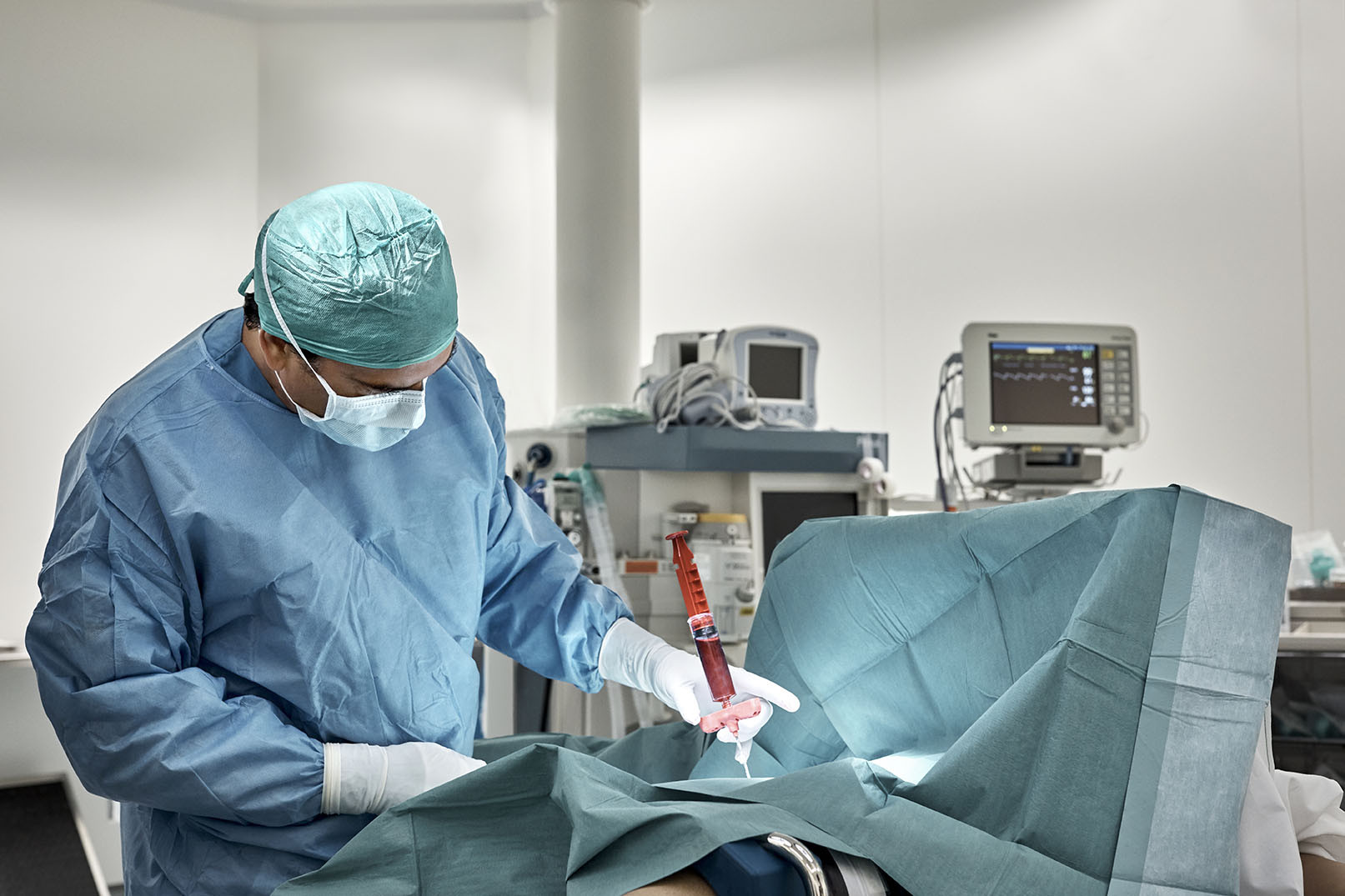The Blood and Marrow Transplant Program in the Division of Hematology and Cellular Therapy at Cedars-Sinai Cancer was one of just 12 among 172 adult transplant programs where patient survival one year after transplant exceeded expectations, according to 2024 rankings from the Center for International Blood and Marrow Transplant Research. Survival rate at Cedars-Sinai was 90%, which far exceeded the expected survival outcome of 68%-83%.
“We’ve made a variety of changes during the past several years that have had a dramatic impact on our patient outcomes,” said Ronald Paquette, MD, clinical director of the Stem Cell and Bone Marrow Transplant Program at Cedars-Sinai.
One important change, Paquette said, was routine use of the chemotherapy drug cyclophosphamide after each transplant. This helps prevent graft-versus-host disease, which causes the patient’s immune system to attack the recipient’s organs.
“That one change, which has since been validated through published research, led to an almost immediate 20% improvement in one-year survival rates,” Paquette said. “What we have done since then has been to fine-tune our processes.”
These refinements have included an adjustment to the therapies used to prepare a patient for transplantation, which is called a conditioning regimen. The therapies in the conditioning regimen kill the cancer cells in the patient’s body, make room in the patient’s bone marrow for the transplanted stem cells to grow, and help prevent the patient’s immune system from attacking the new cells.
“There are many possible combinations, and we initially tried to match the conditioning therapy to each patient’s specific disease scenario,” Paquette said. “What we have learned by carefully tracking patient outcomes is that it is more important to choose a regimen that pairs well with the posttransplant cyclophosphamide. Some combinations caused excessive toxicities to the kidneys and the lungs. We have narrowed our conditioning regimens to two that we have found to work best.”
Another improvement has come from a gradual increase in the number of transplants using half-matched donors—often a child or an extended family member—rather than a donor with a perfectly matched tissue type.
“For these half-matched transplants, the donors are most often children, nieces, nephews or even grandchildren,” Paquette said. “The median age for our transplant patients is 68 to 70, and our half-matched donors might be 30 or 40 years younger than the recipient. We’ve found that younger donors yield substantially better outcomes than older donors, and now 85% of our transplants are performed using these half-matched donors.”
John Chute, MD, director of the Division of Hematology and Cellular Therapy at Cedars-Sinai Cancer, attributes these improvements and the resulting run of high rankings to Paquette and the stem cell transplantation team.
“This ranking is a great tribute to Dr. Paquette, and to our amazing physicians, administrative staff, nurse practitioners, nurses, and other members of the care team,” Chute said. “There are many working parts to the transplant process and our stellar outcomes wouldn’t be possible without the expertise of a number of different people who provide the attentive care our patients need.”
The transplant team continues to investigate avenues for further refining their process, Paquette said. They are working to develop options for offering transplants to a broader range of patients, and to better understand the interaction between stem cells and host bone marrow and the effects of intestinal bacteria on the transplant process.
“Our current process is producing great outcomes, and through strategic steps we are continuing to refine it,” Paquette said. “Through all of these efforts, we hope to learn things that will help us further improve therapies in the future.”
Cedars-Sinai Health Sciences University is advancing groundbreaking research and educating future leaders in medicine, biomedical sciences and allied health sciences. Learn more about the university.


